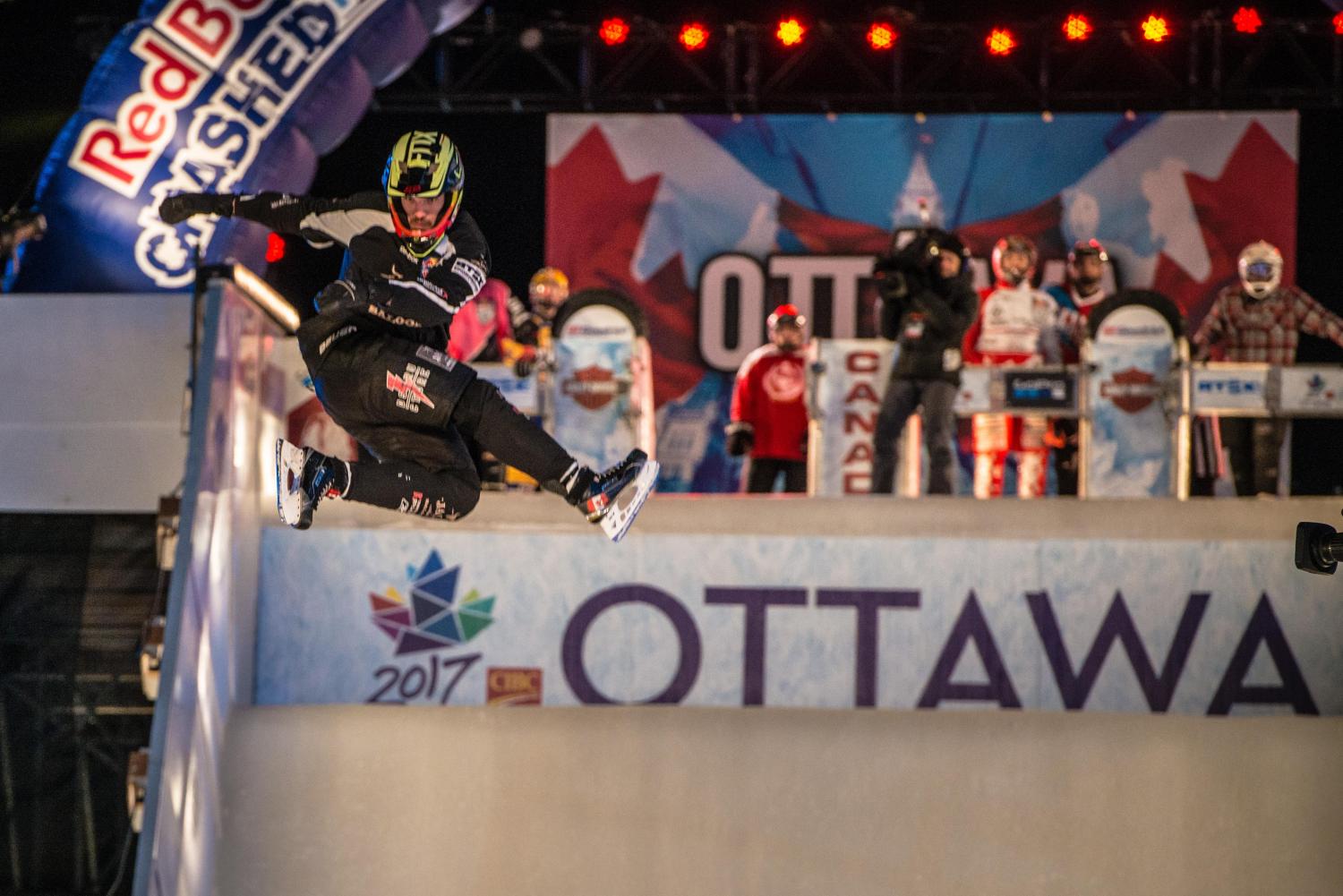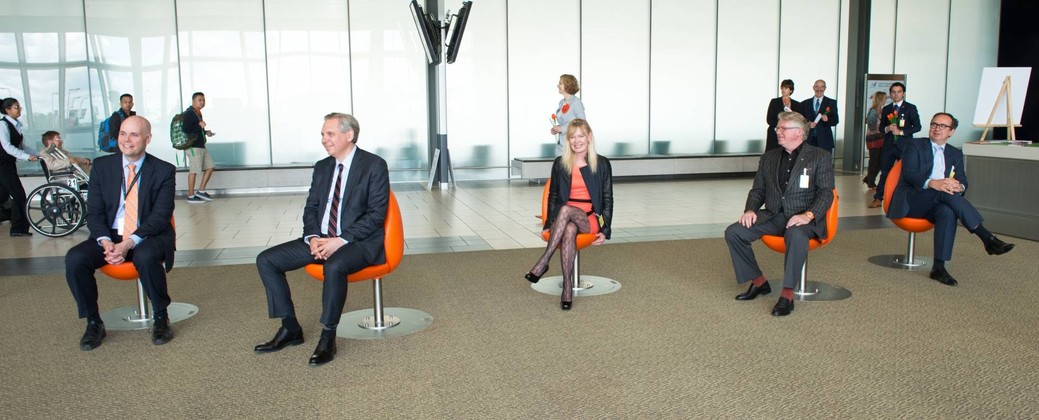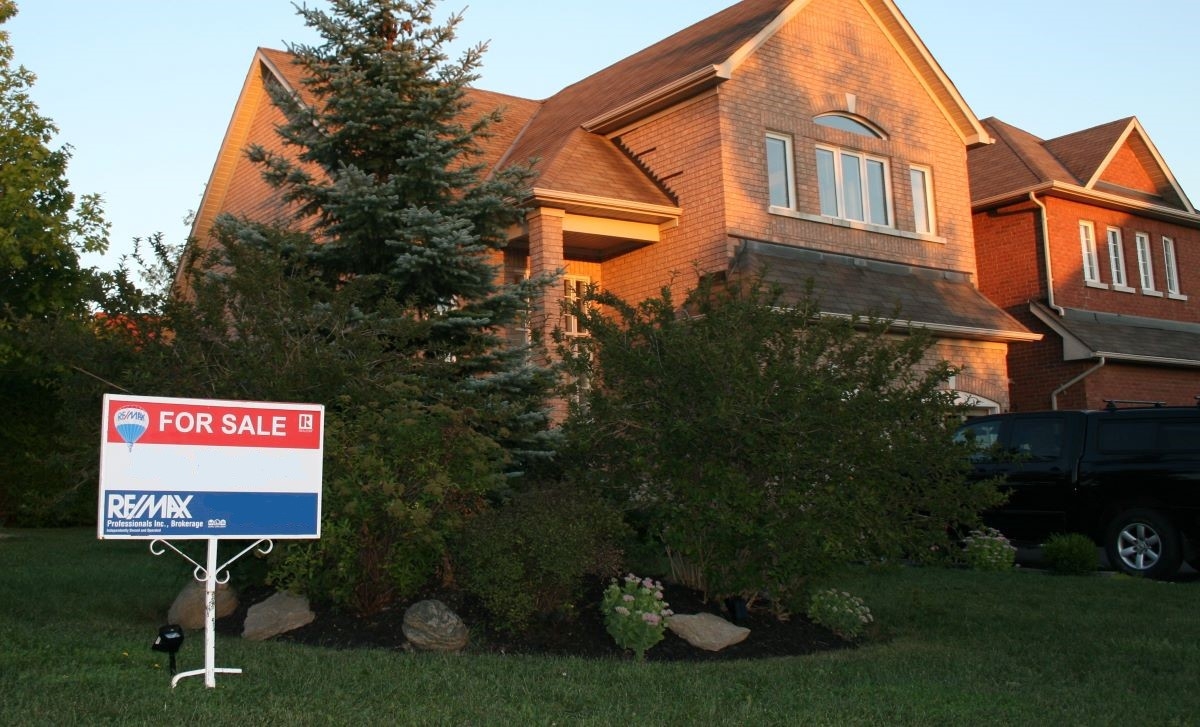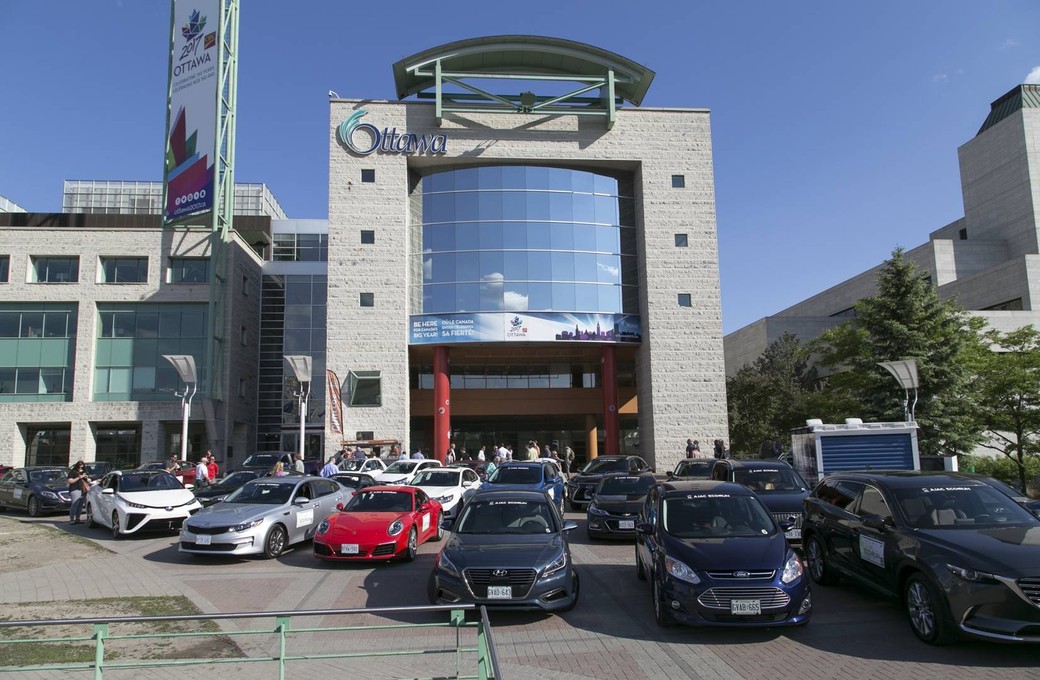
Auto Writer Hones Green Driving Skills on 2016 EcoRun
The 2016 EcoRun wrapped up with closing speeches at Ottawa City Hall. Twenty-seven vehicles, minus my EV, made the journey from Toronto to the nation’s capital. (photo courtesy AJAC)
Closing speeches under the hot sun at Ottawa City Hall may sound enticing, but thanks to the whims of lithium-ion batteries, I had to settle for an hour of five-pin bowling.
My electric vehicle came up short on the final leg of AJAC’s annual EcoRun event – a rolling showcase of green vehicles touring from Toronto to the nation’s capital.
I sensed trouble upon entering the 401 in Brockville, when after five kilometres on the odometer (with the A/C on), my 125 km range plummeted by more than 20 clicks. Had some prankster engaged the parking brake or flipped on the heated rear seats?
Hmmm… it was 116 km to City Hall, and even at 103 to the hotel, I didn’t like my chances.
Switching off the accessories helped a little, but at normal highway speeds, my ride was gobbling electrons at a rate that meant I’d soon need a Plan B.
The EV finally forced my hand about 50 kilometers from Ottawa. With barely 30 left on the meter, I exited at the farming community of Kemptville where a fortuitous charging station at the bowling alley provided an ideal spot to kill time and score a mediocre 122.

Okay, so I didn’t quite finish the 2016 EcoRun.
But no matter, as it isn’t really a competition. It’s an opportunity for Canadian journalists to test a range of eco-friendly vehicles back-to-back, while doing their best to drive green. This means being light on both the gas and brake, coasting towards red lights and staying at or near the speed limit. And making the most of regenerative braking for those driving hybrids.
No dangerous hypermiling techniques, like drafting transport trucks or driving 80 km/h on our 400-series highways. EcoRun is about real-world results – those achievable by average motorists, not those with a death wish.
And it features more than just pure electrics, hybrids and diesels. Conventional gas burners from automakers like Mazda, Honda, GM and Subaru are now extracting more from each drop of fuel without aid from turbo or electricity, proving one needn’t pay a premium to save on petrol.
All in, the 2016 EcoRun featured twenty-seven vehicles, spanning subcompacts to SUVs and trucks. Porsche even brought their iconic 911, which may have looked out of place until you consider its achievable fuel economy – averaging 7.8 litres/100 kilometres when driven in a very un-Porschelike way.
My seven vehicles represented a good cross section of this fleet, from the 1.0-litre Ford Focus to the 400-hp, seven seat Volvo XC90 SUV.
Here are a few highlights:
Mazda CX-3
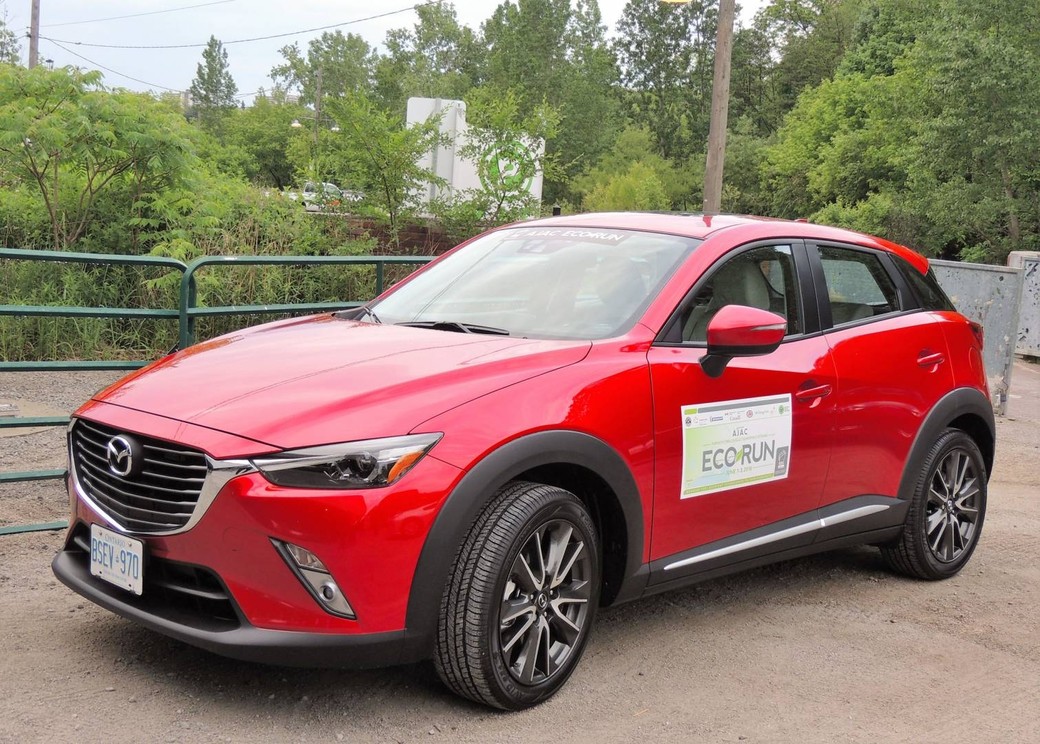
On route to our first stop, Toronto’s Evergreen Brickworks, I drove Mazda’s CX-3 compact crossover.
It employs the company’s fuel-saving SKYACTIV tech with a naturally-aspirated 2.0-litre four cylinder (146 hp, 146 lb/ft of torque). NRCan fuel ratings are 8.8/7.3 litres/100 km (city/hwy); our team of journalists scored a thriftier 6.4.
By the way, do yourself a favour and check out the historic brickworks at 550 Bayview Ave. This rehabilitated site, abandoned in 1984 after nearly a century of operation, is now an environmental hub with a farmer’s market on weekends (see Evergreen.ca for hours), urban art and an old brick factory with its original kilns.
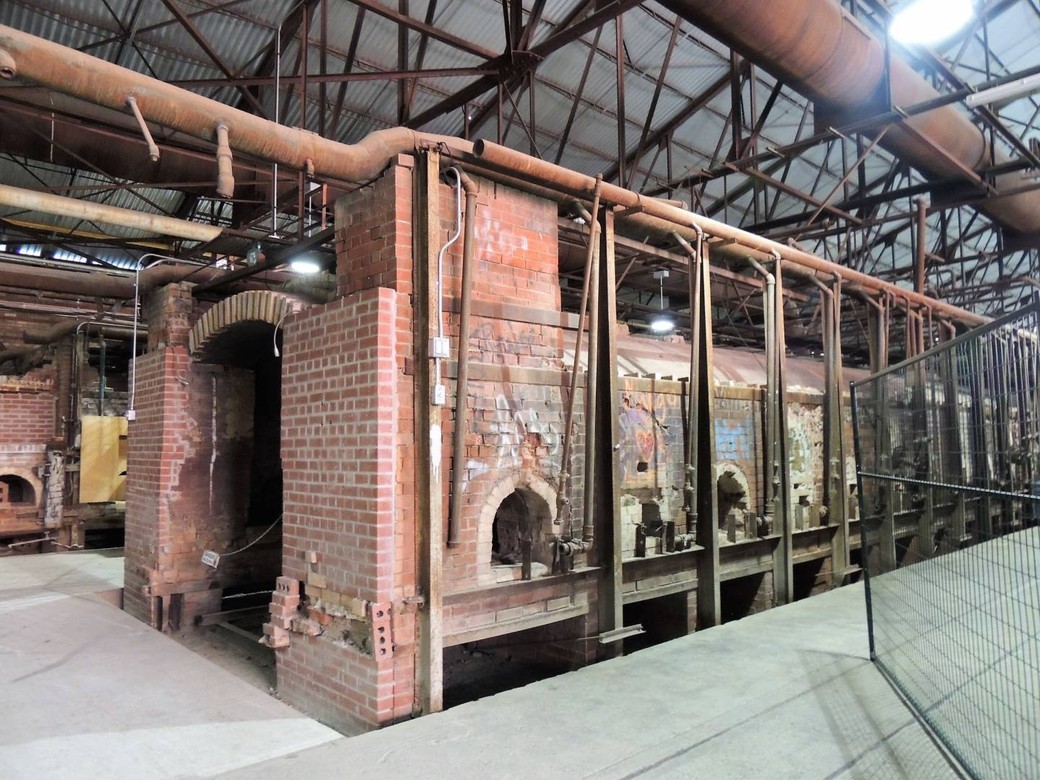
Subaru Impreza
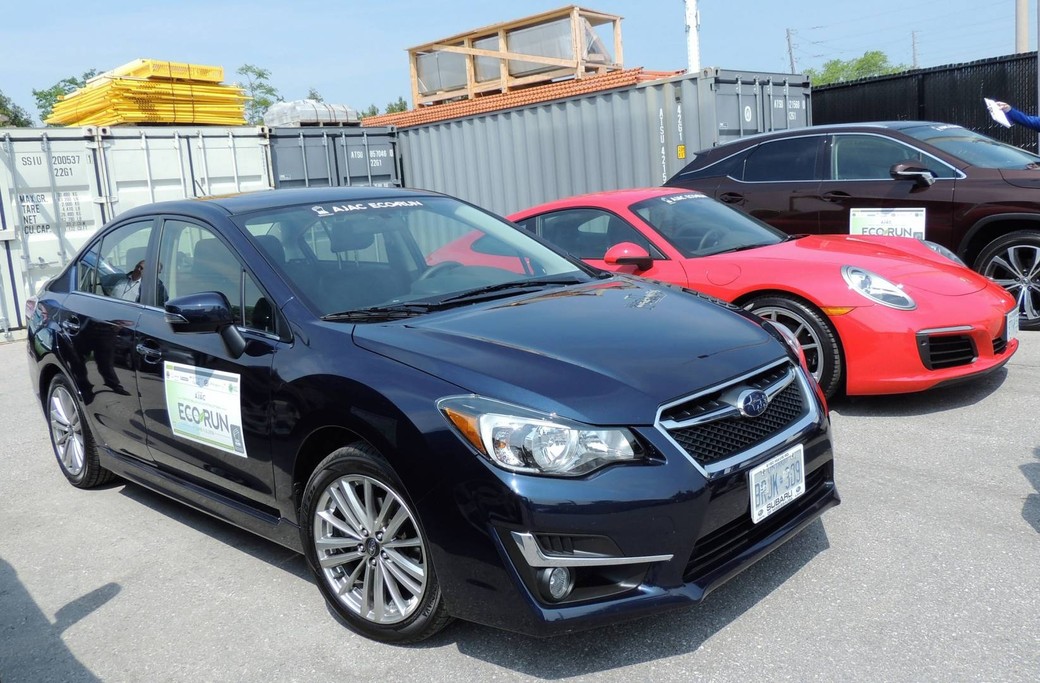
I fondly recall the second-generation Impreza – a googly-eyed compact with a punchy 2.5-litre boxer engine and low centre of gravity. It made about 170 hp (excellent for the early 2000s), but was thirsty.
Fast-forward to 2012 where Subaru swapped the 2.5 for a more fuel-efficient 2.0-litre four cylinder. Power dropped to 148 hp and 145 lb/ft (where it remains today), but Impreza now sips at a rated 8.5/6.4 litres per 100 km (city/hwy). We managed to do better, with a combined average of 6.1.
What’s even more impressive is the starting price of just under $20K for an AWD vehicle. My $31K tester, however, included Subaru’s EyeSight safety tech, which can stop the vehicle if it senses an impending crash. Thankfully, I didn’t require its services.
Ford Focus 1.0
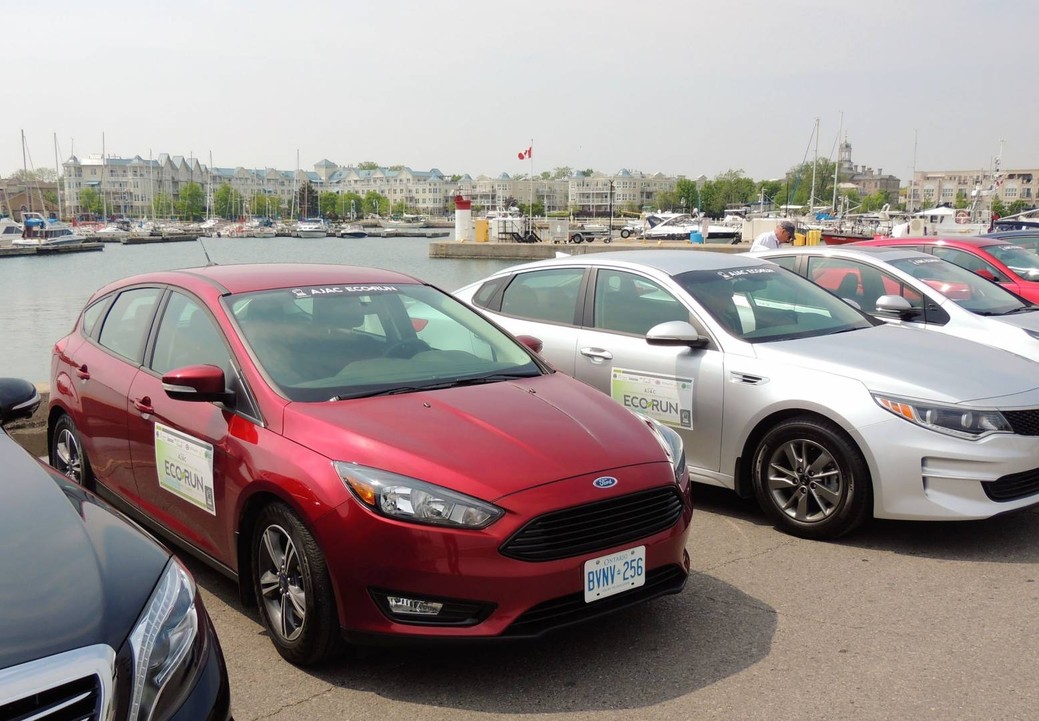
This three-cylinder EcoBoost engine has a tiny displacement, but with a turbo it still manages a respectable 123 hp and 125 lb/ft of torque. Modest compared to the Focus RS that delivers an asphalt-ripping 350 horses, but this model is about sipping fuel, not guzzling it.
The 1.0-litre EcoBoost is rated at 7.8/5.7/6.9 L/100km (city/hwy/comb), which we once again thrashed with an average of 5.8 litres combined.
Such thrift comes at the cost of performance, but there are other powertrains for those wanting more sizzle.
Lexus RX 450h
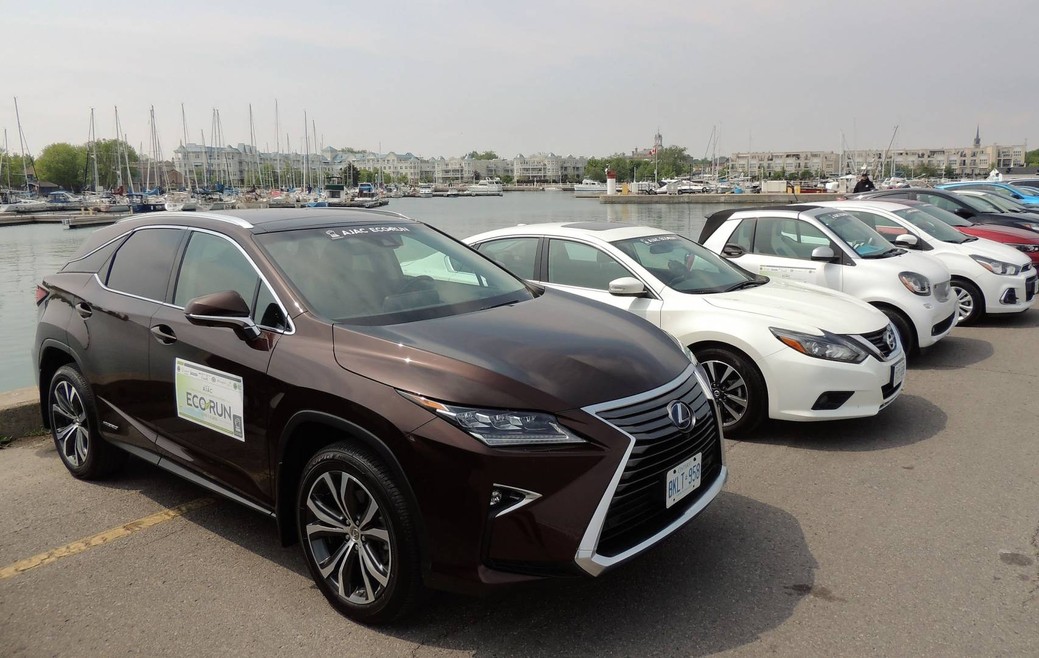
Large, luxurious and surprisingly fuel efficient, this hybrid version of Lexus’s popular mid-size crossover was a relaxing way to wrap up Day One. Starting at the scenic Cobourg waterfront, it averaged 7.6 L/100 km over the 91 kilometres to Belleville. Our group scored 7.1 L/100km overall.
NRCan rates the 3.5-litre V6 with electrics (net 308 hp) at a slightly higher 8.0 litres combined, but either way, it’s exceptional for a vehicle this size.
Volvo XC90 T8
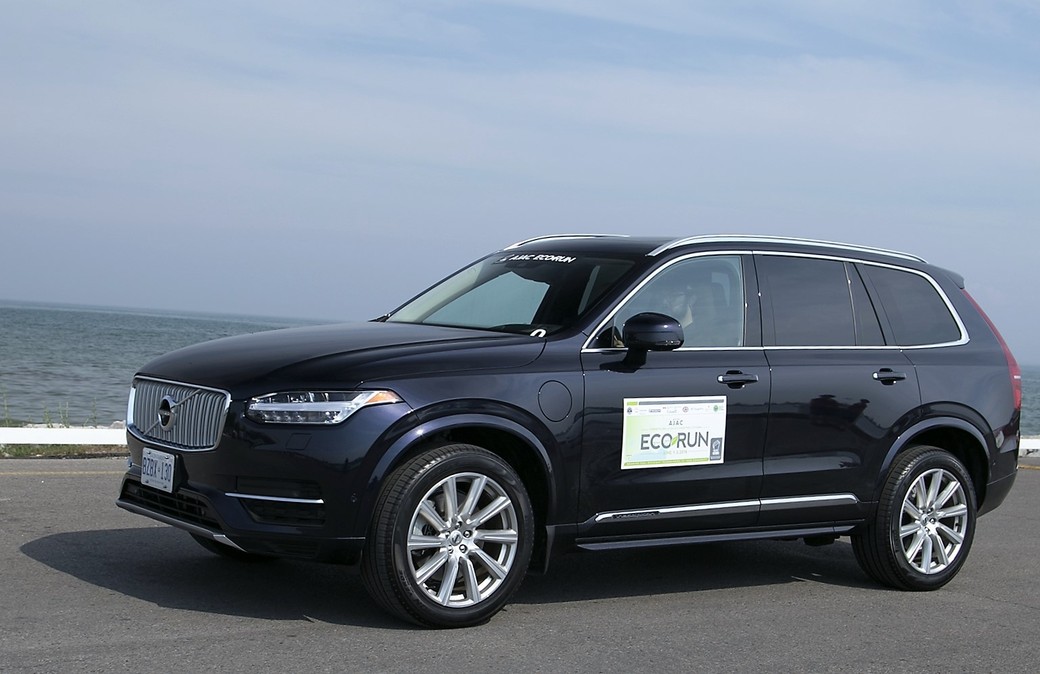
Even more impressive were my Day 2 results from Volvo’s full-size, seven passenger SUV. Despite its three-ton curb weight and impressive 400 hp and 472 lb/ft of torque, I managed 3.8L/100 km from Belleville to Kingston.
That’s because the XC90 derives its V8-worthy power from a 2.0-litre four cylinder, aided by a turbocharger and supercharger (for 316 hp), along with an 87-hp electric motor.
Sure, it’s more fun to drive with a heavy foot, but I resisted the urge and made use of its 30 km of electric-only range. And for a change, bested my colleagues who averaged 5.9 L/100 km.
Hyundai Sonata Plug-In Hybrid
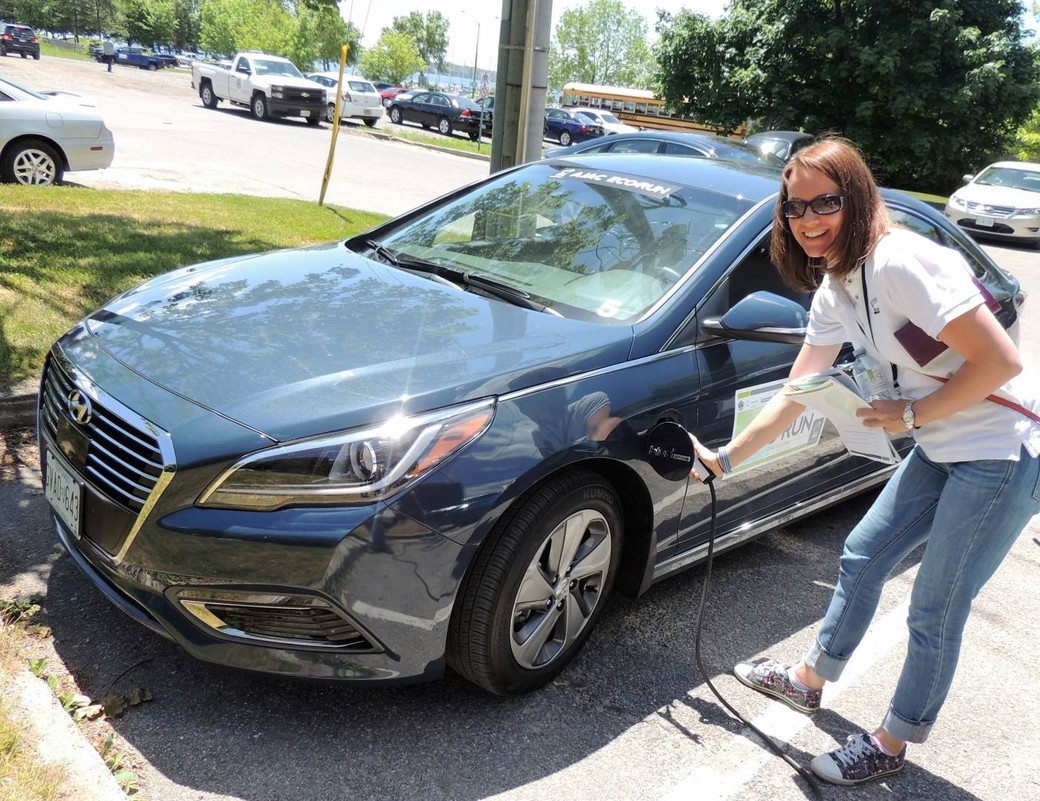
I’ve always believed plug-in hybrids to be the best eco option – so far. You can charge up for enough electric-only range to get around town, without the hassle of calling CAA when the battery runs dry.
This Hyundai is powered by a direct-injected 2.0-litre four cylinder with electric motor that provides enough juice for up to 43 km of emissions-free driving.
It wasn’t fully charged for my trip from Kingston to Brockville, yet I still averaged 4.7 L/100 km over the 84 km route. The team score on this one was 3.8.
I had a word with EcoRun co-chair David Miller, who assured me that overall, each of us outperformed the official NRCan numbers, with an average efficiency score of 133.2 per cent.
“It’s an incredible figure and one that can clearly be achieved by accelerating gently, anticipating traffic ahead, coasting to a stop and avoiding high speeds,” he added, proving that eco-friendly driving is as much about how you drive as what you drive.


